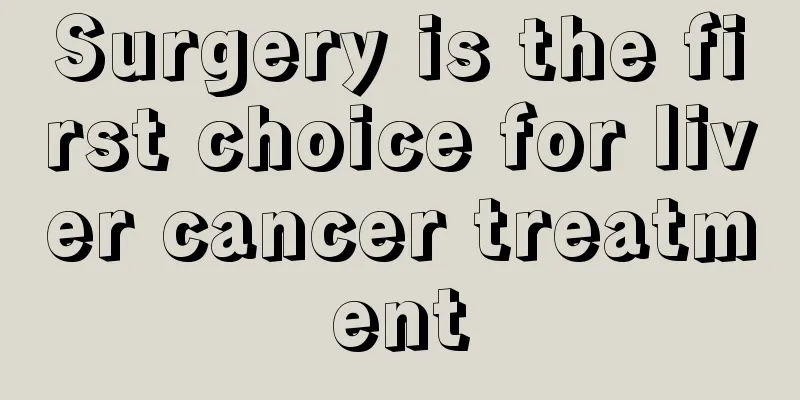Surgery is the first choice for liver cancer treatment

|
The general principle of liver cancer treatment is early detection and early diagnosis, and the implementation of standardized comprehensive treatment methods is particularly important. Surgical treatment is to completely remove the tumor tissue to achieve the purpose of complete cure. Modern medical liver surgery techniques are becoming increasingly mature. The size of the tumor during surgery is not the key factor that determines the success or failure of the operation. Whether the operation can completely remove the tumor and the efficacy of the resection are closely related to factors such as the size and number of the tumor, the degree of cirrhosis, liver function, the location and boundaries of the tumor, the presence or absence of a complete capsule, and venous cancer thrombus. The good postoperative standard for patients undergoing surgical resection is: 1. No organic lesions of important organs such as the heart, lungs, and kidneys; 2. All indicators of liver function are normal; 3. No extrahepatic tumor metastasis, and the tumor is localized, not multiple or diffusely distributed. 4. The one-year survival rate of patients with early liver cancer after surgery is more than 80%, and the five-year survival rate is more than 50%. Another surgical treatment method is liver transplantation, which is the best choice for patients with small liver cancer who have cirrhosis and liver decompensation. There are many criteria for the indications of liver transplantation for liver cancer, mainly including the size and number of tumors and the presence or absence of vascular invasion and lymph node metastasis. Generally speaking, the requirements for the absence of large blood vessel invasion, lymph node metastasis and extrahepatic metastasis are relatively consistent, but the requirements for the size and number of tumors are not the same. The indication should be selected based on a comprehensive judgment based on the ratio of donor to recipient needs. |
<<: Nursing of dry mouth after radiotherapy for nasopharyngeal carcinoma
>>: Intravesical chemotherapy for bladder cancer
Recommend
The dangers of inverted heart t wave
The heart can be said to be the most important or...
What are the causes of joint pain?
Joint pain is a disease with a relatively high in...
What kind of hair style is suitable for a long face?
Young people nowadays, both male and female, spen...
Acne below the collarbone
Acne occurs on many people. Different people get ...
Benefits of Licorice Milk Mask
Many of our female friends may have the habit of ...
What is the most effective way to treat gray hair
As people's living standards continue to impr...
What are the benefits of drinking Donggua peel soaked in water
Winter melon is a common vegetable. It can be mad...
What causes muscle pain?
Muscle pain is usually caused by strenuous exerci...
How long is the safe period before and after menstruation?
When couples have sex, they often calculate the s...
Normal values of five thyroid indicators
If you want to know whether you have thyroid dise...
What to do if beard is sparse?
Boys with sparse beards are often considered to b...
What happens if the thyroid stimulating hormone is too high?
High levels of thyroid-stimulating hormone can ea...
Who are the high-risk groups for prostate cancer? Three types of men need to be screened for prostate cancer
In recent years, the incidence of cancer has been...
How long can bacteria from a sneeze live in the air?
When the seasons change, if you are not careful, ...
How many years is the shelf life of toothpaste
Toothpaste does not have a shelf life. Many peopl...









